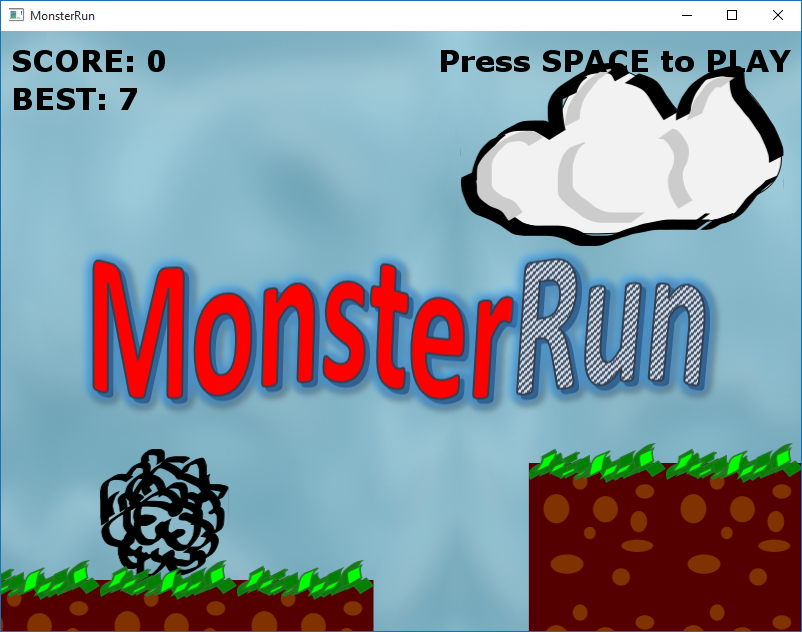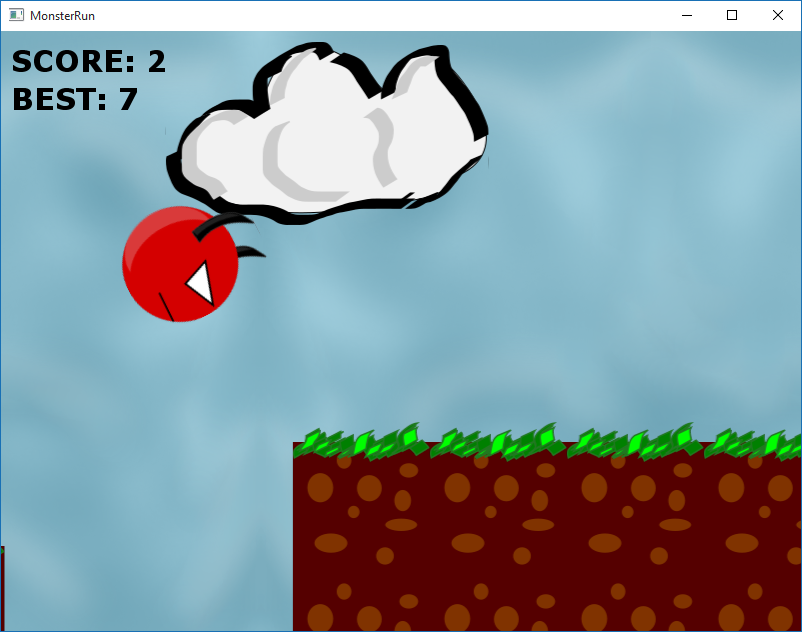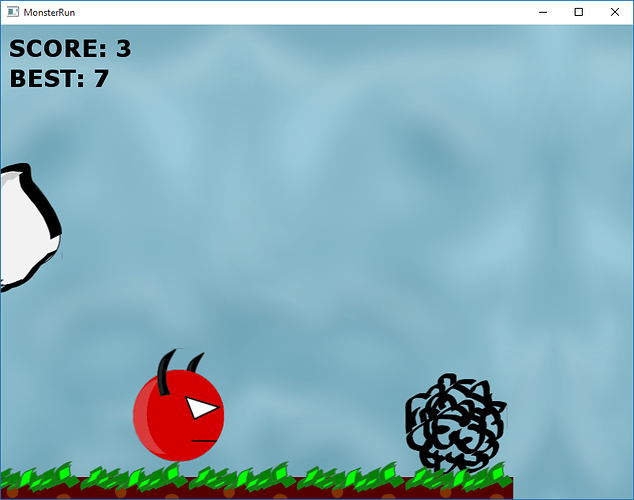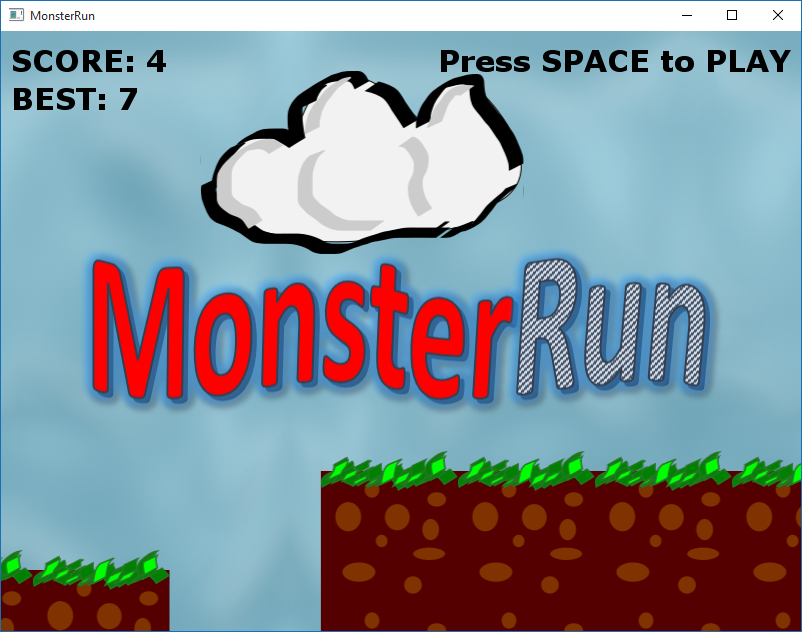I just had the vertical velocity on always (gravity) and reversed it when jumping, so it appeared like on the sides of a triangles, flat jumping. Should have tried Arc’d jumping this time. Regarding the collision bounds, yes, I simply used rectangles, while I could have used polygons. Even better I could have scaled the polygons down, forgot that. Will do that next time.
That’s just because I was refactoring my graphics engine and the progress was left in the middle of the process due to LD. I should have used a previous stable build of my engine, but used this since there were a lot of features I’d like to have (since I removed some things and replaced them with new implementations). These however ran fine on my system, but not on yours, will have to investigate that.
Maybe the reason was that I allocate a large bytebuffer that can hold 1024 * 1024 * 16 bytes in my batcher. I know that it is a lot, will be soon modifying the system to use instanced rendering instead of batching all the data every frame. Or even I can stop unmapping and mapping them again and again when the data doesn’t change. Will look into that too, I learnt a lesson.
I just wanted to say that I’m more comfortable in my own engine than in Java2D. As you have stated, I don’t think OpenGL is overkill, it’s nothing wrong in using it to get hardware acceleration. Ever thought why Java2D based engines like GTGE and JGame had ports to JOGL/LWJGL while they are just 2D?
And more over, I wanted to try to create an engine that can do both 2D and 3D games, in a pretty similar way. I know the mechanisms differ a lot, but I’m more interested in building a tool that gives a high level way to create games easily. That is my primary inspiration that made me take computer science as my college course and learn programming in the first place.
Yeah I agree with you. I just set the camera projection to the window width and height in the initialization of the camera, but I never resized the camera. I used to configure the camera to keep the aspect ratio, but this time, I had to keep to do it in the time, where I had only 10 hours in 48 hours to focus on my game (due to college, and cultural party we’re having tomorrow, I’m doing a skit) with other things like eating, classes, etc., cutting the rest of the time. Will improve this once the judgement is over, and I’ll remember this next time.
Thanks a lot for giving me my valuable feedback on my game. I’m pretty sure I’m improving myself in this area of making games (aside from programming tools).





